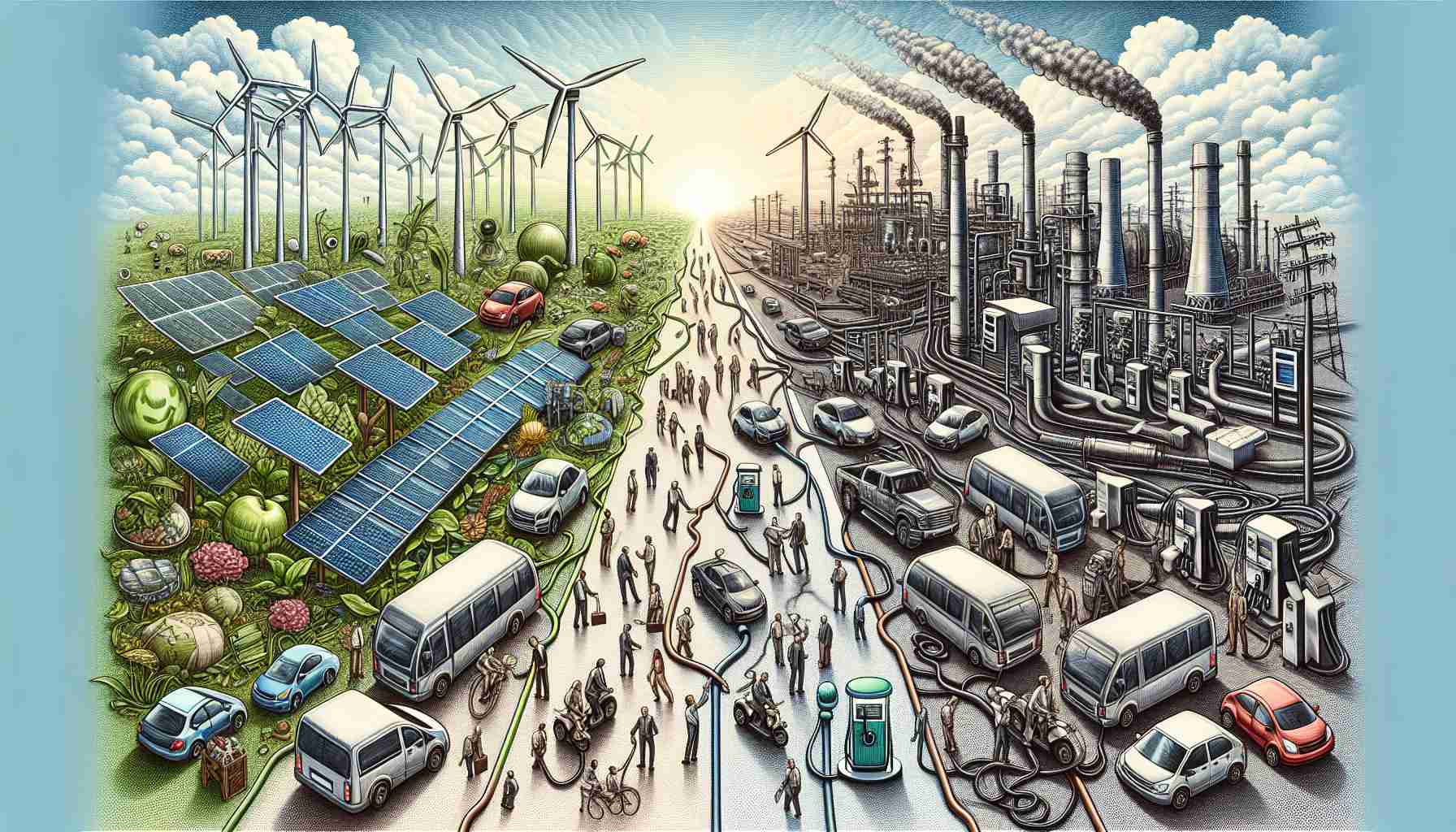The Future of the US Hydrogen Economy
The future of the hydrogen economy in the United States may lean more towards natural gas and carbon capture technologies rather than pursuing exclusively renewable energy sources. As 2024 unfolds, significant investments are reportedly on hold, awaiting clarity from the Biden administration regarding anticipated tax credits for green hydrogen.
Analysts from BloombergNEF have highlighted the importance of governmental regulations in shaping the investment landscape. The uncertainty surrounding these regulations has caused billions in funding to stagnate, as investors seek more definitive guidelines before committing their resources. With the potential for a second term under President Donald Trump, the shift towards utilizing natural gas as a primary resource for hydrogen production could be a pivotal strategy.
This approach may prioritize the use of existing fossil fuels in conjunction with emerging technologies aimed to reduce emissions, fostering a hydrogen economy that does not fully embrace green energy solutions. The repercussions of such a decision could profoundly impact the direction of energy policies, environmental sustainability efforts, and the overall market dynamics surrounding hydrogen production in the country.
In conclusion, as the energy landscape continues to evolve, the choices made at this juncture will undoubtedly shape the future of the hydrogen economy in the United States.
Examining the Broader Impacts of the Hydrogen Economy
The potential trajectory of the hydrogen economy in the United States, particularly with its inclination toward natural gas and carbon capture, carries significant implications for society, culture, and the global economy. As hydrogen emerges as a possible cornerstone of clean energy transition, how we produce it can reshape our energy infrastructure and economic paradigms.
A focus on natural gas over exclusively renewable energy sources may entrench fossil fuel dependency for longer, complicating the transition to truly sustainable energy systems. This could result in a cultural acceptance of continued fossil fuel use, raising ethical concerns about climate responsibility and environmental justice. Communities reliant on traditional energy sectors may face prolonged economic security, while those advocating for renewable sources could feel marginalized in energy policy discussions.
From an economic perspective, delaying investments due to uncertain regulations can stifle domestic innovation and maintain a competitive disadvantage globally. Countries like Germany and Japan are already making substantial strides in their hydrogen initiatives, emphasizing renewable sources. If the U.S. pivots towards fossil fuels, it risks falling behind in an industry poised for exponential growth.
Moreover, environmental consequences of a hydrogen economy centered around carbon capture and natural gas are profound. Although carbon capture technologies have promise, they are not a silver bullet. Increased reliance on hydrocarbons could undermine global climate agreements as nations strive for carbon neutrality.
In conclusion, the decisions made today regarding the hydrogen economy will have profound reverberations across economic, environmental, and cultural landscapes. The future rests on whether we pursue a path underscored by innovation in clean energy or one shaped by the legacy of fossil fuels.
Is the U.S. Hydrogen Economy Shifting Towards Natural Gas? Insights and Predictions for 2024
The hydrogen economy in the United States is at a crossroads as it navigates potential shifts towards natural gas and carbon capture technologies in 2024. This direction raises critical questions about the future of renewable energy and the feasibility of achieving a sustainable hydrogen sector.
Current Trends in Hydrogen Production
One of the most significant trends is the growing reliance on natural gas, particularly methane, for hydrogen production through a process called steam methane reforming (SMR). While this method is currently the most common, it raises concerns over carbon emissions. This has led to an emphasis on integrating carbon capture, utilization, and storage (CCUS) technologies to mitigate environmental impacts.
Features of Hydrogen Production Technologies
– Steam Methane Reforming (SMR): A widely used method that extracts hydrogen from natural gas but emits significant CO2 unless paired with CCUS.
– Electrolysis: A cleaner method that uses electricity to split water into hydrogen and oxygen, emphasizing the need for renewable energy sources to create greener hydrogen, known as “green hydrogen.”
Advantages and Disadvantages
Pros:
– Cost Efficiency: Current infrastructure favors natural gas production, making it a more economical option in the short term.
– Scalability: Existing natural gas facilities can be retrofitted with CCUS technologies, facilitating a smoother transition to lower emissions.
Cons:
– Environmental Concerns: Continued reliance on fossil fuels could slow progress towards sustainability goals.
– Market Uncertainty: Regulatory uncertainties are hindering substantial investments in green hydrogen initiatives.
Market Analysis and Investment Outlook
The market for hydrogen is expected to grow significantly, driven by demand for clean energy solutions. However, investment momentum is stalling due to unclear federal policies. Analysts suggest that once tax credits for green hydrogen are clarified, there could be a resurgence of capital influx, particularly for projects focused on renewable energy sources.
Comparisons: Natural Gas vs. Renewable Hydrogen
| Aspect | Natural Gas (SMR) | Green Hydrogen (Electrolysis) |
|———————–|——————————-|———————————|
| Cost | Lower current costs | High initial costs |
| Emissions | High without CCUS | Minimal |
| Scalability | High due to existing infrastructure | Needs new systems |
| Regulatory Risk | Lower current uncertainty | High until tax credits are confirmed |
Future Predictions and Insights
As the Biden administration navigates energy policies, the balance between promoting renewable resources and utilizing existing fossil fuel infrastructure will be critical. Experts predict that if natural gas remains a primary resource, the hydrogen market might grow but at the potential cost of long-term sustainability.
Conversely, an increased focus on green hydrogen production could stimulate innovation and investment, aligning the U.S. with global sustainability trends.
In conclusion, the trajectory of the U.S. hydrogen economy remains uncertain but pivotal. The decisions made in 2024 regarding natural gas and green hydrogen strategies will invariably influence environmental sustainability, economic conditions, and the nation’s energy future.
For more on energy innovations, visit Energy.gov.


